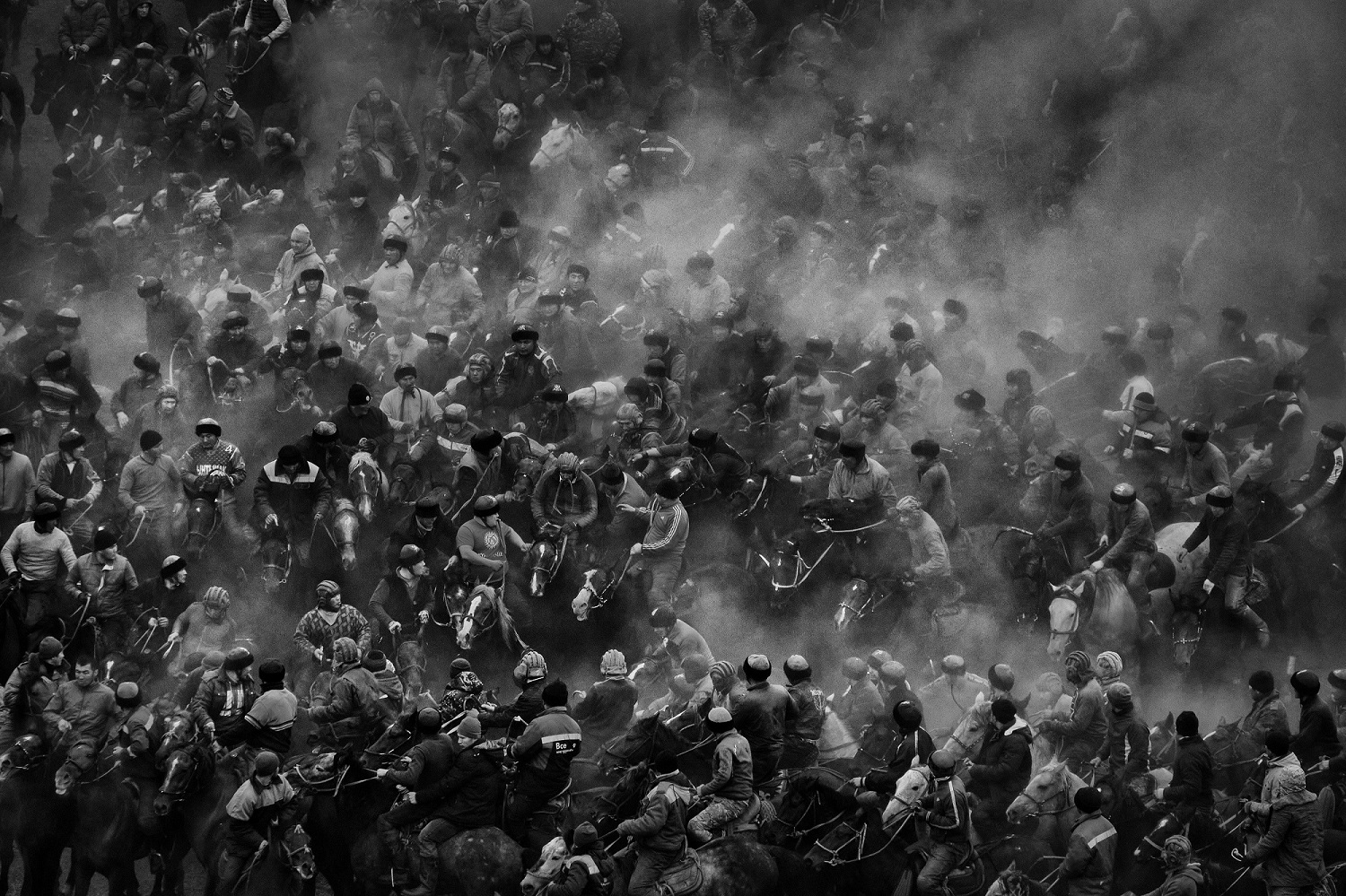
In the village of Uzgen, Osh region, more than 170 horses (in this picture) and men wearing the classic Soviet tank hat or a Kyrgyz tebetei hat, push and shove each other with dexterity and endurance in fearless combat as they fight for possession of a young 60 kg bull. Itin Bietov Jildizbek, a wealthy local man, has organized a massive game of Alaman-Ulak to celebrate the 13th birthday of his son Cherniaz. Thousands of riders have come to compete for the prizes he is offering throughout the day; 10 horses, 10 yaks, 10 camels, and the grand prize of the final game, a Lada brand car.
Trying to outrun your opponents with a headless goat wedged between your leg and your horse might not be your idea of a fun game but in Kyrgyzstan, Kok Boru is the national sport. Dead Goat Polo, as some refer to it, looks more like cavalier rugby. Generally divided into two teams of five (and hundreds or more in a freestyle variant called Alaman-Ulak), fearless men on horseback race from one end of the field to the other chasing the rider with possession trying to prevent him from scoring a point by heaving the 20 kg body into the tai kazan (goal) at either end.
Only stallions are used in this game because they are naturally anti-social and eager to fight off rivals. The players train their horses to muscle out other horses in the pack while they themselves wrestle each other to snatch the goat and gallop toward the goal, slamming into the rubber tires that encircle the meter-high mound.
Most villages throughout the country have a playing field, some have official stadiums. Professional teams play tournaments which culminate in the national championships that take place during the festivities surrounding Nowruz on March 21st when the Kyrgyz nation celebrates the beginning of spring. This year (2020), the unprecedented coronavirus pandemic has halted large public gatherings but unofficial games continue to be organized in many villages. Players share the cost of the goat or wealthier citizens sponsor games with prizes to celebrate life events, inspire good fortune or simply for fun, and the winning team always takes home the goat for a post game feast. The origins of this legendary game lie somewhere between nomads hunting or defending their livestock against predatory wolves, to men and horses honing their fighting skills. Boys from the age of 4 – 5 learn to play on donkeys and instead of a goat, they throw around a much lighter pillow made of goatskin stuffed with hay. The new generation is happy to continue this rough-and-tumble game.